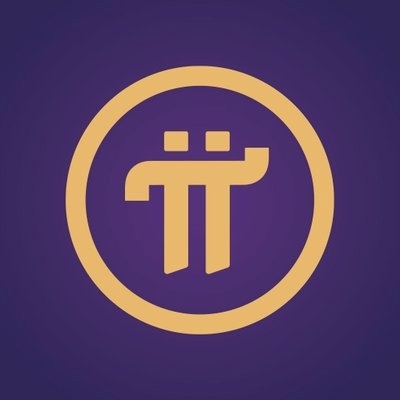What is One Ethereum Worth?

Understanding Ethereum's Worth in Today's Digital Economy
The innovation and advancement within the blockchain landscape have significantly highlighted the utility and potential of Ethereum. But what exactly determines its worth? When probing into the value of Ethereum (ETH), understanding its position in the market and the variety of areas it influences is vital.
The Evolution of Ethereum
Ethereum was conceptualized in late 2013 by Vitalik Buterin, who believed that Bitcoin was too limited in its scripting language. Officially launched in 2015, Ethereum expanded on the capabilities of blockchain technology by introducing a framework for decentralized applications (dApps) and smart contracts. This innovation set Ethereum apart from other digital currencies and laid the foundation for what one Ethereum's worth is perceived to be.
Market Dynamics Influencing Ethereum's Value
Ethereum’s price, like other cryptocurrencies, is primarily determined by supply and demand dynamics, speculation, and, notably, its utility. Here's a closer look at these factors:
-
Supply and Demand: Ethereum's supply isn't capped like Bitcoin's; however, changes like Ethereum's transition to a proof-of-stake system (Ethereum 2.0) potentially influence supply by introducing concepts like staking.
-
Utility: Ethereum's blockchain is highly versatile. It enables the operation of NFTs (Non-Fungible Tokens) and various decentralized finance (DeFi) solutions. These functionalities contribute to its demand.
-
Speculation and Market Sentiment: Cryptocurrency markets often experience volatile periods driven by investor sentiment. News events, market trends, global economic conditions, and regulatory announcements can cause sharp fluctuations in ETH’s value.
Technological Advancements
Ethereum's ongoing development plays a crucial role in its valuation. The transition to Ethereum 2.0 aims to enhance scalability, sustainability, and security, making the network more appealing and possibly more valuable. The introduction of the "Beacon Chain" and plans for "sharding" demonstrate the project's commitment to reducing congestion and increasing transaction speeds.
Ethereum vs. Other Cryptocurrencies
Ethereum’s network is frequently referred to as the “world computer” due to its inherent functionality for creating decentralized applications. Unlike Bitcoin, which primarily serves as a digital currency or store of value, Ethereum's broader application use cases can enhance its intrinsic worth, making it equally appealing to developers and investors.
The Role of Decentralized Finance (DeFi) and NFTs
Decentralized Finance has risen to prominence, with Ethereum being the backbone of many DeFi projects. This has increased its utility as transactions and smart contracts running on the Ethereum network continue to grow. Similarly, the surge of NFTs markets, which frequently use Ethereum’s ERC-721 tokens, contributes to the demand for ETH.
Economic Impact and Adoption
The adoption of cryptocurrencies by institutions and individuals has provided Ether with added legitimacy as a form of currency. As more businesses and developers make use of Ethereum’s blockchain for their operations, one Ethereum's worth extends beyond its monetary value into its real-world application and adoption.
Choosing the Right Exchange and Wallet
To engage effectively with Ethereum, the choice of platforms for transactions matters significantly. For instance, the Bitget Exchange offers a robust and secure avenue for trading Ethereum and other cryptocurrencies. When considering storage and transactions, opting for a dependable wallet like the Bitget Wallet ensures security and ease of use, which is critical for managing digital assets.
Evaluating the Future of Ethereum
Predicting Ethereum’s future value is speculative but fascinating. With ongoing developments and increasing adoption, Ethereum has the potential to maintain or even exceed its current valuations. The upcoming changes and enhancements, particularly Ethereum 2.0, are expected to fortify its stance in the blockchain world further.
The Broader Economic Landscape
The potential of Ethereum goes beyond its digital asset status. It plays an undeniable role in the digital economy, intertwining with technological, corporate, and consumer trends. This convergence means that Ethereum's worth is intricately linked to its influence across industries, from finance to art.
The question of what one Ethereum is worth invites investors, tech enthusiasts, and businesses alike to explore a composite of influences-ranging from technological advancements and market dynamics to strategic adoption and broader economic realities. With such a multifaceted landscape governing its value, Ethereum remains a pivotal player in the future of digital finance.
Related articles
Latest articles
See moreAbout author
I'm Crypto Trailblazer, a bilingual pioneer in the crypto space. I can interpret the ecological changes after Ethereum's merge and the technological breakthroughs of Layer 2 solutions in English, while analyzing the progress of the Russian Central Bank Digital Currency (CBDC) pilot and the collaboration models of St. Petersburg's blockchain community in Russian. Having worked on building a decentralized identity verification system in Moscow and explored the integration path of NFTs and the metaverse in New York, I'll unveil the developmental differences and shared opportunities of blockchain technology in Europe, the US, and Russia from a bilingual perspective.























